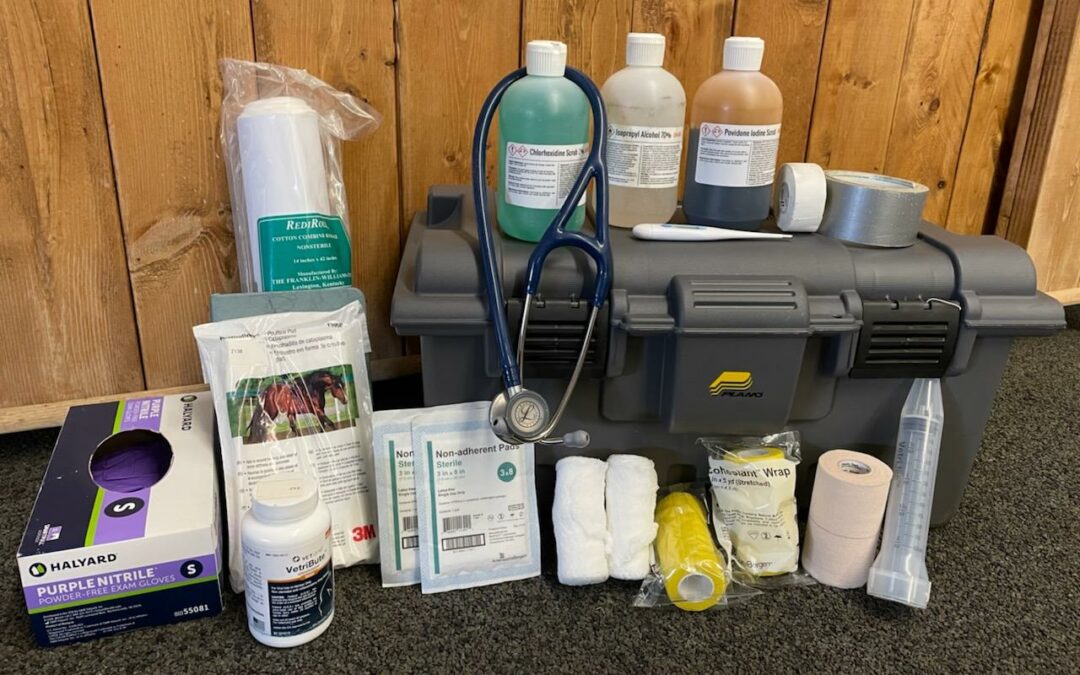Do you have a first aid kit prepared for your horses? While a first aid kit is not meant to substitute veterinary care, it can be incredibly helpful in emergencies to help stabilize your horse until the vet can attend. Your kit will include essential equipment, as well as bandage materials and some basic medications. We will talk about the contents of your first aid kit below, but first let’s consider some basics. The first aid kit you create should be portable, organized, and airtight. It should be stored somewhere protected from the elements but also easily identified and accessible in an emergency. Some of the contents of your kit will be sensitive to getting wet and sensitive to extreme temperatures. Whenever items are used they should be replaced immediately, to avoid realizing equipment is missing in the middle of an emergency.
Communication with the vet will be key in any emergency. If something happens to your horse that makes you reach for your first aid kit, you should also be reaching for your phone. A phone call to the veterinarian can help determine if the emergency requires immediate veterinary attention or if treatments can be done at home. Your equipment can help provide valuable information to the vet, such as vital signs and other basic physical examination parameters. Any medications given from your first aid kit should be done under the recommendation of the veterinarian.
Equipment
- Notebook and pen to help you record times, dates, medications given, vital signs, etc.
- Stethoscope to take a heart rate and listen to GI sounds
- Digital rectal thermometer to take your horse’s temperature
- Bandage scissors with a blunt tip to remove bandages safely
- Flashlight or other light source (head lamp) in case an emergency happens in the dark
- Knife to cut ropes, blankets, or other items
- Box of disposable gloves to wear, especially when cleaning and bandaging wounds
- Duct tape for wrapping hooves
- Epsom Salts for soaking hoof abscesses
- Poultice pad (Animalintex) for poulticing and wrapping hooves
- Clean bucket
- Clean towels
- Extra lead rope and halter
- Oral dosing syringes (60 cc with catheter tip)
- Vaseline
Wound Care
- Antiseptic scrub such as betadine or nolvasan (chlorhexidine)
- Gauze squares for cleaning wounds
- Saline solution for cleaning wounds
- Rubbing alcohol
- Box of non-adherent sterile bandage squares (Telfa pads)
- Few gauze rolls for padding
- Few rolls of vetwrap
- 1-2 sheet cotton rolls or Gamgee (12”-16” tall)
- 1-2 rolls of Elastikon, a strong adherent bandage tape
- White athletic tape
- Standing bandages and quilts
Medications
Medications you keep in your first aid kit should be discussed with your veterinarian. Please consult your veterinarian before administering any of these products.
- NSAIDs – phenylbutazone or flunixin meglumine (Banamine)
- Sedation – Dormosedan gel
- Triple antibiotic ointment

